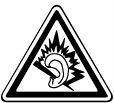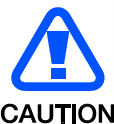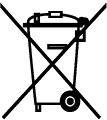Samsung Electronics Co SCHR261 Cellular/PCS/AWS CDMA Phone with Bluetooth User Manual D MODEL SCH R100 Fellow FC
Samsung Electronics Co Ltd Cellular/PCS/AWS CDMA Phone with Bluetooth D MODEL SCH R100 Fellow FC
Users Manual

Confidential
SCH-R261
Digital Tri -
Band Phone
2011.03.
-1-
FCC Approval Document
for SCH-R261
FCC ID :A3LSCHR261
9. User manual
SAMSUNG ELECTRONICS CO, LTD

User manual
SCH-R261
Draft 1
05-

using this manual
This user manual has been specially designed to guide you through the functions
and features of your mobile phone. To get started quickly, refer to “introducing your
mobile phone.” “

Excessive exposure to sound at high volum es can cause hearing damage.
Always turn the volum e down before plugging the earphones into an audio source and
use only the minim um volum e setting necessary to hear your conversation or music.
Install mobile phones and equipment with caution
Ensure that any mobile phones or related equipment installed in your vehicle are
securely mounted. Avoid placing your phone and accessories near or in an air bag
deployment area. Improperly installed wireless equipment can cause serious injury
when air bags inflate rapidly.
Handle and dispose of batteries and chargers with care
l Use only Samsung-approved batteries and chargers specifically designed for
your phone. Incompatible batteries and chargers can cause serious injuries
or damage to your phone.
l Never dispose of batteries or phones in a fire. Follow all local regulations
when disposing used batteries or phones.
l Never place batteries or phones on or in heating devices, such as microwave
ovens, stoves, or radiators. Batteries may explode when overheated.
l Never crush or puncture the battery. Avoid exposing the battery to high
external pressure, which can lead to an internal short circuit and overheating.
Avoid interference with pacemakers
Maintain a minimum of 15 cm (6 inches) between mobile phones and pacemakers to
avoid potential interference, as recommended by manufacturers and the
independent research group, Wireless Technology Research. If you have any reason
to suspect that your phone is interfering with a pacemaker or other medical device,
turn off the phone immediately and contact the manufacturer of the pacemaker or
medical device for guidance.
Turn off the phone in potentially explosive environments
Do not use your phone at refuelling points (service stations) or near fuels or
chemicals. Turn off your phone whenever directed by warning signs or instructions.
Your phone could cause explosions or fire in and around fuel or chemical storage
and transfer areas or blasting areas. Do not store or carry flammable liquids, gases,
or explosive materials in the same compartment as the phone, its parts, or
accessories.
Reduce the risk of repetitive motion injuries
When sending text messages or playing games on your phone, hold the phone with
a relaxed grip, press the keys lightly, use special features that reduce the number of
keys you have to press (such as templates and predictive text), and take frequent
breaks.

Safety precautions
periods of time.
Avoid interference with other electronic devices
Your phone emits radio frequency (RF) signals that may interfere with unshielded or
improperly shielded electronic equipment, such as pacemakers, hearing aids,
medical devices, and other electronic devices in homes or vehicles. Consult the
manufacturers of your electronic devices to solve any interference problems you
experience.
manufactured not to exceed t he exposure limit s for radio frequency (RF)
energy set by the Federal Comm unications Com m ission (FCC) of the U.S.
governm ent . These FCC exposure limits are derived from t he
recomm endations of two expert organizations, the National Counsel on
Radiation Protection and Measurement (NCRP) and the Institute of
Electrical and Electronics Engineers ( I EEE) . I n both cases, the
recomm endations were developed by scientific and engineering experts
drawn from industry, governm ent, and academ ia after ext ensive reviews
of the scientific literature related to the biological effects of RF energy.
The exposure limit set by the FCC for wireless m obile phones em ploys a
unit of measurement known as the Specific Absorption Rate (SAR). The
SAR is a m easure of the rate of absorption of RF energy by t he hum an
body expressed in units of watts per kilogram (W/ kg). The FCC requires
wireless phones to com ply with a safet y lim it of 1.6 watts per kilogram
(1.6 W/ kg). The FCC exposure limit incorporates a substantial m argin of
safety to give additional protection to t he public and to account for any
variations in measurem ents.
SAR tests are conducted using standard operating positions accepted by
the FCC with the phone transm itting at its highest certified power level in
all t ested frequency bands. Although the SAR is determ ined at the highest
certified power level, the actual SAR level of the phone while operating
can be well below the m axim um value. This is because the phone is
designed to operate at multiple power levels so as to use only the power
required t o reach t he network. I n general, the closer you are to a wireless
base station antenna, the lower the power output .
Before a new m odel phone is available for sale to the public, it m ust be
tested and certified to the FCC that it does not exceed the exposure limit
established by the FCC. Test s for each m odel phone are performed in
positions and locations (e.g. at the ear and worn on the body) as required
by the FCC.
For body worn operation, this m odel phone has been tested and m eets
the FCC RF exposure guidelines whenused with a Sam sung accessory
designated for this product or when used with an accessory that contains
no m etal and t hat positions t he handset a m inim um of 1.5 cm from the
body.
Non- compliance wit h t he above restrictions m ay result in violation of FCC
RF exposure guidelines.
SAR inform ation on this and other m odel phones can be viewed on-line at (
http: / / www.fcc.gov/ oet/ fccid). This site uses the phone FCC I D num ber,
A3LSCHR261. Som etimes it m ay be necessary to rem ove the battery pack
to find t he num ber. Once you have the FCC I D num ber for a particular
phone, follow t he instructions on the website and it should provide values
for typical or m axim um SAR for a particular phone. Additional product
specific SAR inform ation can also be obtained at http: / / www.fcc.gov/ cgb/ sar

Consu m er I nform a t ion on W ireless Phones
The U.S. Food and Drug Adm inistration (FDA) has published a series of
Questions and Answers for consum ers relating t o radio frequency (RF)
exposure from wireless phones. The FDA publication includes the
following inform ation:
W hat kinds of phon es a re t he su bj ect of t his u pda t e?
The term wireless phone refers here to hand-held wireless phones with
built-in ant ennas, often called “ cell,” “m obile,” or “PCS” phones. These
types of wireless phones can expose the user to m easurable radio
frequency energy (RF) because of the short distance between the phone
and the user's head. These RF exposures are lim ited by Federal
Comm unications Com mission safety guidelines t hat were developed with
the advice of FDA and other federal health and safety agencies. When the
phone is located at greater distances from the user, the exposure t o RF is
drastically lower because a person's RF exposure decreases rapidly with
increasing distance from the source. The so-called “cordless phones,”
which have a base unit connected t o the telephone wiring in a house,
typically operate at far lower power levels, and thus produce RF
exposures well within the FCC's compliance limits.
Do w ir eless phones pose a he alt h hazard?
The available scientific evidence does not show that any health problem s
are associated with using wireless phones. There is no proof, however,
that wireless phones are absolutely safe. Wireless phones emit low levels
of radio frequency energy (RF) in the microwave range while being used.
They also em it very low levels of RF when in the stand-by m ode. Whereas
high levels of RF can produce health effects (by heating tissue), exposure
to low level RF t hat does not produce heating effects causes no known
adverse health effects. Many studies of low level RF exposures have not
found any biological effects. Som e studies have suggested that some
biological effects m ay occur, but such findings have not been confirm ed
by additional research. In som e cases, other researchers have had
difficulty in reproducing those studies, or in determining the reasons for
inconsistent results.
W hat is FD A's r ole conce rning t he sa fet y of w ireless phones?
Under the law, FDA does not review the safety of radiation-em itting
consum er products such as wireless phones before they can be sold, as it
does wit h new drugs or m edical devices. However, the agency has
authority to take action if wireless phones are shown to emit radio
frequency energy (RF) at a level that is hazardous t o the user. I n such a
case, FDA could require t he manufacturers of wireless phones t o notify
users of the health hazard and to repair, replace or recall t he phones so
that the hazard no longer exists.
Although the existing scientific data do not justify FDA regulatory actions,
FDA has urged the wireless phone industry to take a num ber of st eps,
including the following:
l “Support needed research into possible biological effects of RF of
the type em itted by wireless phones;
l “Design wireless phones in a way that m inimizes any RF exposure
to t he user that is not necessary for device function; and
l “Cooperate in providing users of wireless phones with t he best
possible inform ation on possible effects of wireless phone use on
hum an health.
FDA belongs to an interagency working group of the federal agencies that
have responsibility for different aspects of RF safety to ensure coordinated
efforts at the federal level. The following agencies belong to t his working
group:
l “National I nstitute for Occupational Safety and Health
l “Environm ent al Protection Agency
l “Federal Com munications Com mission
l “Occupational Safety and Health Administration
l “National Telecom munications and I nform ation Administration
The National I nstitutes of Health participates in som e interagency working
group activities, as well.
FDA shares regulatory responsibilities for wireless phones with the Federal
Comm unications Com mission ( FCC). All phones that are sold in t he United
States must com ply with FCC safety guidelines t hat lim it RF exposure.
FCC relies on FDA and other health agencies for safety questions about
wireless phones.
FCC also regulates the base stations that the wireless phone networks
rely upon. While t hese base stations operate at higher power than do the
wireless phones them selves, the RF exposures that people get from these
base stations are typically thousands of tim es lower than those they can
get from wireless phones. Base stations are thus not the prim ary subject
of the safety questions discussed in this docum ent .
W hat are t he resu lt s of t he rese arch done already?
The research done thus far has produced conflicting results, and m any
studies have suffered from flaws in their research m ethods. Anim al
experim ents investigating the effects of radio frequency energy (RF)
exposures characteristic of wireless phones have yielded conflicting
result s that often cannot be repeated in other laboratories. A few anim al
studies, however, have suggested that low levels of RF could accelerate
the developm ent of cancer in laboratory anim als. However, m any of the
studies that showed increased tum or developm ent used anim als t hat had
been genetically engineered or treated with cancer-causing chemicals so
as t o be pre-disposed to develop cancer in absence of RF exposure. Other
studies exposed the anim als to RF for up to 22 hours per day. These
conditions are not sim ilar to the conditions under which people use
wireless phones, so we don't know with certaint y what the results of such
studies m ean for hum an health.
Three large epidem iology studies have been published since Decem ber
2000. Between them , the studies investigated any possible association
between the use of wireless phones and prim ary brain cancer, gliom a,
meningiom a, or acoustic neurom a, tumors of the brain or salivary gland,
leukemia, or other cancers. None of the studies dem onstrated the
existence of any harmful health effects from wireless phones RF
exposures. However, none of the studies can answer questions about
long-term exposures, since the average period of phone use in these
studies was around three years.
W hat re se arch is n ee ded t o de cide w hethe r RF exposure from
w ir ele ss ph ones poses a h ealt h risk ?
A com bination of laboratory studies and epidemiological studies of people
actually using wireless phones would provide som e of the data t hat are
needed. Lifetim e anim al exposure studies could be com pleted in a few
years. However, very large num bers of anim als would be needed to
provide reliable proof of a cancer prom oting effect if one exists.
Epidemiological studies can provide dat a that is directly applicable to
hum an populations, but t en or m ore years' follow-up m ay be needed t o
provide answers about som e health effects, such as cancer. This is
because the interval between the tim e of exposure t o a cancer-causing
agent and the tim e tum ors develop - if they do - m ay be m any, m any
years. The interpretation of epidemiological studies is ham pered by
difficulties in m easuring actual RF exposure during day-to-day use of
wireless phones. Many factors affect this m easurem ent , such as the angle
at which the phone is held, or which m odel of phone is used.
W hat is FD A doing t o find out m or e about t h e possible healt h
effect s of w ire le ss ph one RF?
FDA is working with the U.S. National Toxicology Program and with
groups of investigators around the world t o ensure that high priority
anim al studies are conducted to address im portant questions about the
effects of exposure to radio frequency energy (RF).
FDA has been a leading participant in the World Health Organization
international Electrom agnetic Fields (EMF) Project since its inception in
1996. An influential result of this work has been the developm ent of a
detailed agenda of research needs that has driven the establishm ent of
new research programs around the world. The Project has also helped
develop a series of public inform ation docum ents on EMF issues.
FDA and Cellular Telecom m unications & I nternet Association (CTI A) have
a form al Cooperative Research and Developm ent Agreem ent (CRADA) t o
do research on wireless phone safety. FDA provides the scientific
oversight, obtaining input from experts in governm ent, industry, and
academ ic organizations. CTI A-funded research is conducted through
contracts t o independent investigators. The initial research will include
both laboratory studies and studies of wireless phone users. The CRADA
will also include a broad assessm ent of additional research needs in t he
context of the latest research developm ents around t he world.
W hat st e ps can I t ake t o reduce m y exposur e t o ra dio fr eque ncy
energy from m y w ireless ph one?
I f there is a risk from these products - and at this point we do not know
that there is - it is probably very sm all. But if you are concerned about
avoiding even potential risks, you can take a few sim ple steps t o minimize
your exposure to radio frequency energy (RF). Since tim e is a key fact or
in how m uch exposure a person receives, reducing the am ount of time
spent using a wireless phone will reduce RF exposure.
l “I f you m ust conduct ext ended conversations by wireless phone
every day, you could place m ore distance between your body and
the source of the RF, since the exposure level drops off
dram at ically with distance. For exam ple, you could use a headset
and carry the wireless phone away from your body or use a
wireless phone connected to a rem ote ant enna.
Again, t he scientific data do not dem onstrate that wireless phones are
harm ful. But if you are concerned about t he RF exposure from these
products, you can use measures like those described above to reduce
your RF exposure from wireless phone use.
W hat about childr en u sing w ire le ss phon es?
The scientific evidence does not show a danger to users of wireless
phones, including children and t eenagers. I f you want to take steps to
lower exposure to radio frequency energy (RF), the m easures described
above would apply to children and teenagers using wireless phones.
Reducing t he tim e of wireless phone use and increasing the distance
between the user and the RF source will reduce RF exposure.
Som e groups sponsored by other national governm ents have advised that
children be discouraged from using wireless phones at all. For exam ple,
the governm ent in the United Kingdom distributed leaflets containing such
a recom m endation in Decem ber 2000. They noted that no evidence exists
that using a wireless phone causes brain t um ors or other ill effects. Their
recomm endation to limit wireless phone use by children was strictly
precautionary; it was not based on scientific evidence that any health
hazard exists.
Do hands- fre e k it s for w ireless phones reduce r isks from ex posure
t o RF e m issions?
Since there are no known risks from exposure to RF em issions from
wireless phones, there is no reason to believe that hands-free kits reduce
risks. Hands-free kits can be used with wireless phones for convenience
and com fort. These system s reduce the absorption of RF energy in the
head because the phone, which is the source of the RF emissions, will not
be placed against the head. On the other hand, if the phone is m ounted
against the waist or other part of the body during use, then that part of
the body will absorb m ore RF energy. Wireless phones m arketed in the
U.S. are required to m eet safety requirem ents regardless of whether they
are used against the head or against the body. Either configuration should

result in com pliance with the safety lim it.
Do w ir eless phone accessories t h a t cla im t o shield t he head from
RF r adiation w or k ?
Since there are no known risks from exposure to RF em issions from
wireless phones, there is no reason to believe that accessories t hat claim
to shield the head from those emissions reduce risks. Som e products that
claim to shield the user from RF absorption use special phone cases, while
others involve nothing m ore than a m etallic accessory attached t o the
phone. Studies have shown that these products generally do not work as
advertised. Unlike “hand-free” kits, these so-called “ shields” m ay int erfere
with proper operation of the phone. The phone m ay be forced to boost its
power t o com pensate, leading t o an increase in RF absorption. I n
February 2002, the Federal t rade Com mission ( FTC) charged t wo
com panies that sold devices that claim ed to protect wireless phone users
from radiation with m aking false and unsubstantiated claim s. According t o
FTC, these defendant s lacked a reasonable basis to substantiate their
claim .
W hat about w ireless ph one int erference w it h m e dical equipm ent ?
Radio frequency energy (RF) from wireless phones can int eract with som e
electronic devices. For this reason, FDA helped develop a detailed t est
method to m easure electrom agnetic interference (EMI ) of im planted
cardiac pacem akers and defibrillators from wireless t elephones. This test
method is now part of a standard sponsored by the Association for the
Advancem ent of Medical instrum entation (AAMI ). The final draft, a joint
effort by FDA, m edical device m anufacturers, and m any other groups,
was com pleted in late 2000. This standard will allow m anufacturers to
ensure that cardiac pacem akers and defibrillators are safe from wireless
phone EMI. FDA has tested wireless phones and helped develop a
voluntary standard sponsored by the I nstitute of Electrical and Electronic
Engineers ( I EEE). This st andard specifies test m ethods and perform ance
requirements for hearing aids and wireless phones so that no interference
occurs when a person uses a com patible phone and a compatible hearing
aid at the sam e time. This standard was approved by the IEEE in 2000.
FDA continues to m onitor the use of wireless phones for possible
interactions with other m edical devices. Should harmful interference be
found to occur, FDA will conduct testing to assess the interference and
work to resolve the problem .
Additional inform ation on the safety of RF exposures from various sources
can be obtained from t he following organizations:
l FCC RF Safety Program :
http: / / www.fcc.gov/ oet/ rfsafety/
l Environm ent al Protection Agency (EPA):
http: / / www.epa.gov/ radiation/
l Occupational Safety and Health Administration's (OSHA):
http: / / www.osha.gov/ SLTC/ radiofrequencyradiation/ index.htm l

l National institute for Occupational Safety and Health (NI OSH) :
http: / / www.cdc.gov/ niosh/ em fpg.html
l World healt h Organization (WHO):
http: / / www.who.int/ peh-emf/
l I nternational Commission on Non- I onizing Radiation Protection:
http: / / www.icnirp.de
l National Radiation Protection Board (UK):
http: / / www.nrpb.org.uk
l Updated 4/ 3/ 2002: US food and Drug Administration
http: / / www.fda.gov/ Radiation-Em ittingProducts/ RadiationEmittingProductsand
Procedures/ Hom eBusinessandEntertainm ent/ CellPhones/ default.htm
Road Safe t y
Your wireless phone gives you the powerful ability to comm unicate by
voice, alm ost anywhere, anytim e. But an im portant responsibilit y
accom panies the benefits of wireless phones, one that every user m ust
uphold.
When driving a car, driving is your first responsibility. When using your
wireless phone behind the wheel of a car, practice good com m on sense
and rem em ber the following tips:
1. Get to know your wireless phone and its features, such as speed
dial and redial. I f available, these features help you t o place your
call without taking your attention off the road.
2. When available, use a hands-free device. I f possible, add an
additional layer of convenience and safety to your wireless phone
with one of t he many hands free accessories available t oday.
3. Position your wireless phone within easy reach. Be able t o access
your wireless phone without rem oving your eyes from the road. I f
you get an incoming call at an inconvenient tim e, let your voice
mail answer it for you.
4. Let the person you are speaking wit h know you are driving; if
necessary, suspend the call in heavy traffic or hazardous weather
conditions. Rain, sleet, snow, ice and even heavy traffic can be
hazardous.
5. Do not take notes or look up phone numbers while driving. Jotting
down a “to do” list or flipping t hrough your address book takes
attention away from your prim ary responsibility, driving safely.
6. Dial sensibly and assess the traffic; if possible, place calls when
you are not m oving or before pulling into traffic. Try to plan calls
when your car will be stationary. I f you need t o m ake a call while
moving, dial only a few num bers, check the road and your mirrors,
then continue.
7. Do not engage in stressful or em otional conversations that m ay be
distracting. Make people you are talking with aware you are driving
and suspend conversations that have the potential to divert your
attention from the road.
8. Use your wireless phone t o call for help. Dial 9-1-1 or other local

em ergency num ber in the case of fire, traffic accident or medical
em ergencies. Rem em ber, it is a free call on your wireless phone!
9. Use your wireless phone t o help others in emergencies. I f you see
an auto accident, crime in progress or other serious em ergency
where lives are in danger, call 9-1-1 or other local em ergency
num ber, as you would want others t o do for you.
10. Call roadside assistance or a special non-em ergency wireless
assistance num ber when necessary. I f you see a broken-down
vehicle posing no serious hazard, a broken traffic signal, a m inor
traffic accident where no one appears injured, or a vehicle you
know to be stolen, call roadside assistance or other special non-
em ergency num ber.
“The w ire less indu st ry r e m inds you t o use your phone sa fely w h en
dr iv ing.”
For m or e infor m at ion, plea se call 1 - 8 8 8 - 9 0 1 - SAFE, or visit our
w eb- sit e w w w .w ow - com .com
Pr ovided by t h e Cellu la r Te lecom m unicat ions & I nt e rnet
Associa t ion
Operating Envir onm e nt
Rem em ber to follow any special regulations in force in any area and
always swit ch your phone off whenever it is forbidden to use it, or when it
may cause interference or danger. When connecting the phone or any
accessory to another device, read its user's guide for detailed safety
instructions. Do not connect incom patible products.
As with other m obile radio transmitting equipm ent , users are advised that
for the satisfactory operation of the equipm ent and for the safety of
personnel, it is recommended t hat the equipm ent should only be used in
the norm al operating position.
Using Your Ph one Near Ot her Elect r onic D ev ices
Most m odern electronic equipm ent is shielded from radio frequency (RF)
signals. However, certain electronic equipm ent m ay not be shielded
against the RF signals from your wireless phone. Consult t he
manufacturer t o discuss alternatives.
Pa cem a kers
Pacem aker m anufacturers recom m end that a minim um distance of 15 cm
(6 inches) be m aintained bet ween a wireless phone and a pacem aker to
avoid potential interference with the pacem aker.
These recom m endations are consistent with the independent research
and recom m endations of Wireless Technology Research.
Pe rsons w it h pa cem a kers:
l should always keep the phone m ore than 15 cm
(6 inches) from their pacem aker when the phone is switched on.
l should not carry t he phone in a breast pocket.

l should use the ear opposite the pacem aker to m inim ize potential
interference.
I f you have any reason t o suspect that interference is taking place, switch
your phone off im m ediately.
Hearing Aids
Som e digital wireless phones m ay interfere with som e hearing aids. I n the
event of such interference, you m ay wish to consult your hearing aid
manufacturer t o discuss alternatives.
Ot her M edica l Devices
I f you use any other personal m edical devices, consult t he m anufacturer
of your device to determ ine if it is adequately shielded from external RF
energy. Your physician m ay be able t o assist you in obtaining this
inform ation. Switch your phone off in healt h care facilities when any
regulations posted in t hese areas instruct you t o do so. Hospitals or
health care facilities m ay be using equipm ent that could be sensitive to
external RF energy.
Veh icles
RF signals m ay affect im properly installed or inadequately shielded
electronic systems in m otor vehicles. Check with the m anufacturer or its
representative regarding your vehicle. You should also consult the
manufacturer of any equipm ent that has been added to your vehicle.
Post e d Facilit ies
Switch your phone off in any facility where posted notices require you to
do so.
Pot ent ially Ex plosive Environm e nt s
Switch your phone off when in any area wit h a potentially explosive
atm osphere and obey all signs and instructions. Sparks in such areas
could cause an explosion or fire resulting in bodily injury or even death.
Users are advised t o switch the phone off while at a refueling point
(service station). Users are reminded of the need to observe restrictions
on the use of radio equipm ent in fuel depots (fuel storage and distribution
areas), chem ical plants or where blasting operations are in progress.
Areas with a potentially explosive atm osphere are often but not always
clearly m arked. They include below deck on boats, chemical transfer or
storage facilities, vehicles using liquefied pet roleum gas (such as propane
or butane), areas where t he air contains chem icals or particles, such as
grain, dust or metal powders, and any other area where you would
norm ally be advised to turn off your vehicle engine.
Em e rgency Calls
This phone, like any wireless phone, operates using radio signals, wireless
and landline networks as well as user programm ed functions, which
cannot guarantee connection in all conditions. Therefore, you should
never rely solely on any wireless phone for essential comm unications

(m edical em ergencies, for exam ple).
Rem em ber, to m ake or receive any calls the phone m ust be switched on
and in a service area with adequate signal strength. Emergency calls m ay
not be possible on all wireless phone networks or when certain network
services and/ or phone features are in use. Check with local service
providers.
To m ake an emergency call:
1. I f the phone is not on, switch it on.
2. Key in the emergency num ber for your present location (for
exam ple, 911 or other official emergency num ber). Em ergency
num bers vary by location.
3. Press .
I f certain features are in use ( call barring, for exam ple), you m ay first
need to deactivate those features before you can make an emergency call.
Consult this docum ent and your local cellular service provider.
When m aking an em ergency call, rem em ber t o give all the necessary
inform ation as accurately as possible. Rem em ber that your phone may be
the only m eans of comm unication at the scene of an accident; do not cut
off the call until given permission to do so.
Rest rict ing Ch ildre n's acce ss t o your Ph one
Your phone is not a toy. Children should not be allowed to play with it
because they could hurt them selves and others, dam age the phone or
make calls that increase your phone bill.
FCC N ot ice and Ca ut ions
FCC N ot ice

-Connect t he equipm ent int o an outlet on a circuit different from that to
which the receiver is connected.
-Consult t he dealer or an experienced radio/ TV t echnician for help.
The phone m ay cause TV or radio interference if used in close proximity
to receiving equipm ent. The FCC can require you t o stop using the phone
if such interference cannot be eliminated.
Vehicles using liquefied petroleum gas (such as propane or butane) m ust
com ply wit h the National Fire Protection Standard ( NFPA-58). For a copy
of this standard, cont act the National Fire Protection Association, One
Battery m arch Park, Quincy, MA 02269, Attn: Publication Sales Division.
Caut ion s
Changes or m odifications m ade in the radio phone, not expressly
approved by Sam sung, will void t he user’s authority to operate the
equipm ent.
Only use approved batteries, antennas and chargers. The use of any
unauthorized accessories m ay be dangerous and void the phone warranty
if said accessories cause dam age or a defect to the phone.
Although your phone is quite sturdy, it is a com plex piece of equipment
and can be broken. Avoid dropping, hitting, bending or sitting on it.
Ot her I m por t ant Safet y I nform ation
l Only qualified personnel should service the phone or install the
phone in a vehicle. Faulty installation or service m ay be dangerous
and m ay invalidate any warranty applicable to the device.
l Check regularly that all wireless phone equipm ent in your vehicle is
mounted and operating properly.
l Do not store or carry flamm able liquids, gases or explosive
materials in the sam e com partment as the phone, its parts or
accessories.
l For vehicles equipped with an air bag, rem em ber that an air bag
inflates with great force. Do not place objects, including both
installed or portable wireless equipm ent in the area over the air
bag or in the air bag deployment area. I f wireless equipm ent is
im properly installed and the air bag inflat es, serious injury could
result .
l Switch your phone off before boarding an aircraft. The use of
wireless phone in aircraft is illegal and m ay be dangerous to the
aircraft's operation.
l Failure to observe these instructions m ay lead t o the suspension or
denial of telephone services to the offender, or legal action, or both.
Pr oduct Per form ance
Gett ing the M ost Ou t of You r Sign al Re cept ion
The quality of each call you make or receive depends on t he signal
strength in your area. Your phone inform s you of the current signal

strength by displaying a num ber of bars next to the signal strength icon.
The m ore bars displayed, the stronger the signal.
I f you're inside a building, being near a window m ay give you better
reception.
Un derst anding t he Pow er Save Fe at ure
I f your phone is unable to find a signal aft er 15 m inutes of searching, a
Power Save feature is autom atically activated. I f your phone is active, it
periodically rechecks service availability or you can check it yourself by
pressing any key.
Anytim e the Power Save feature is activated, a m essage displays on the
screen. When a signal is found, your phone returns to standby m ode.
Maint a in in g Your Phone's Pe ak Pe rform a nce
For the best care of your phone, only authorized personnel should service
your phone and accessories. Faulty service m ay void the warrant y.
There are several sim ple guidelines to operating your phone properly and
maintaining safe, satisfactory service.
l Place the m obile phone's acoustic output next to your ear for proper
orentation.
Do not tamper or alter the phone's antenna.
l Don't use the phone if the antenna is dam aged.
l Speak directly into the phone's receiver.
l Avoid exposing your phone and accessories t o rain or liquid spills.
I f your phone does get wet, im m ediately turn the power off and
rem ove the battery. If it is inoperable, call Custom er Care for
service.
Ava ilabilit y of Various Features/ Ring Tone s
Many services and features are network dependent and m ay require
additional subscription and/ or usage charges. Not all features are
available for purchase or use in all areas. Downloadable Ring Tones m ay
be available at an additional cost. Other conditions and restrictions m ay
apply. See your service provider for additional inform ation.
Battery St andby and Ta lk Tim e
Standby and talk tim es will vary depending on phone usage patterns and
conditions. Battery power consum ption depends on fact ors such as
network configuration, signal strength, operating tem perature, features
selected, frequency of calls, and voice, data, and other application usage
patterns.
Battery Pr ecaut ions
l Never use any charger or battery that is dam aged in any way.
l Use the battery only for its intended purpose.
l I f you use the phone near the network's base station, it uses less
power; talk and standby tim e are greatly affected by the signal
l
l

strength on the cellular network and the param et ers set by the
network operator.
l Battery charging tim e depends on t he remaining battery charge
and the type of battery and charger used. The battery can be
charged and discharged hundreds of times, but it will gradually
wear out. When the operation tim e (talk time and standby tim e) is
noticeably shorter than norm al, it is time to buy a new battery.
l I f left unused, a fully charged battery will discharge itself over time.
l Use only Sam sung-approved batteries and recharge your bat tery
only with Sam sung-approved chargers. When a charger is not in
use, disconnect it from the power source. Do not leave the battery
connect ed to a charger for m ore than a week, since overcharging
may shorten its life.
l Extreme tem peratures will affect the charging capacit y of your
battery: it m ay require cooling or warm ing first.
l Do not leave the battery in hot or cold places, such as in a car in
sum m er or winter conditions, as you will reduce the capacity and
lifetim e of the battery. Always t ry to keep the battery at room
tem perature. A phone with a hot or cold battery m ay tem porarily
not work, even when the battery is fully charged. Li-ion batteries
are particularly affected by temperatures below 0 ° C (32 ° F).
l Do not short-circuit t he battery. Accidental short- circuiting can
occur when a m etallic object (coin, clip or pen) causes a direct
connection bet ween the + and - terminals of the battery (m etal
strips on the battery), for example when you carry a spare battery
in a pocket or bag. Short-circuiting t he terminals m ay dam age the
battery or the object causing the short-circuiting.
l Dispose of used batteries in accordance wit h local regulations. In
som e areas, the disposal of batteries in household or business
trash m ay be prohibited. For safe disposal options for Li-I on
batteries, contact your nearest Samsung authorized service center.
Always recycle. Do not dispose of batteries in a fire.
Care and M a in t enance
Your phone is a product of superior design and craftsm anship and should
be treated with care. The suggestions below will help you fulfill any
warranty obligations and allow you to enjoy this product for m any years.
l Keep the phone and all its parts and accessories out of t he reach of
small children.
l Keep the phone dry. Precipitation, hum idity and liquids contain
minerals t hat will corrode electronic circuits.
l Do not use the phone with a wet hand. Doing so m ay cause an
electric shock to you or dam age t o the phone.
l Do not use or store the phone in dusty, dirty areas, as its m oving
parts m ay be dam aged.
l Do not store t he phone in hot areas. High tem peratures can
shorten the life of electronic devices, dam age batteries, and warp
or m elt certain plastics.
l Do not store t he phone in cold areas. When the phone warm s up t o
its norm al operating tem perature, m oisture can form inside the
phone, which may damage the phone's electronic circuit boards.
l Do not drop, knock or shake the phone. Rough handling can break
internal circuit boards.
l Do not use harsh chem icals, cleaning solvents or strong detergents
to clean the phone. Wipe it with a soft cloth slightly dam pened in a
mild soap-and-water solution.
l Do not paint the phone. Paint can clog the device's m oving parts
and prevent proper operation.
l Do not put the phone in or on heating devices, such as a
microwave oven, a stove or a radiator. The phone m ay explode
when overheated.
l When the phone or battery gets wet, the label indicating water
dam age inside the phone changes color. I n this case, phone repairs
are no longer guaranteed by the m anufacturer's warranty, even if
the warranty for your phone has not expired.
l I f your phone has a flash or light, do not use it t oo close to t he
eyes of people or anim als. This m ay cause dam age to their eyes.
l Use only the supplied or an approved replacem ent antenna.
Unauthorized antennas or m odified accessories m ay damage the
phone and violate regulations governing radio devices.
l I f the phone, battery, charger or any accessory is not working
properly, take it t o your nearest qualified service facility. The
personnel there will assist you, and if necessary, arrange for
service.

for environmentally safe recycling.
Business users should contact their supplier and check the terms and conditions of
the purchase contract. This product should not be mixed with other commercial
wastes for disposal.
Correct disposal of batteries in this product
(Applicable in the European Union and other European countries with separate
battery return systems)
This marking on the battery, manual or packaging indicates that the batteries in this
product should not be disposed of with other household waste at the end of their
working life. Where marked, the chemical symbols Hg, Cd or Pb indicate that the
battery contains mercury, cadmium or lead above the reference levels in EC
Directive 2006/66. If batteries are not properly disposed of, these substances can
cause harm to human health or the environment.
To protect natural resources and to promote material reuse, please separate
batteries from other types of waste and recycle them through your local, free battery
return system.
assembling and preparing
your mobile phone
Get started by assembling and setting up
your mobile phone for its first use.
phone.
2. Scroll to the profile you are using.
3. Press <Options> Õ Edit Õ Voice call ringtone.
4. Select a ringtone category Õ a ringtone.
5. Press <Options> Õ Select (if necessary).
6. Press <Save>.
To switch to another profile, select it from the list.
Use the simplified menus
To set up simplified menu items,
1. In Idle mode, press [OK].
2. Press <Options> Õ Customise menu.
3. Select your favourite menus.
4. Press <Options> Õ Open to select submenus (if necessary).
5. Press <Save>.
6. To access an item from the simplified menus,
7. In Idle mode, press [OK].
8. Scroll to the menu item you want and press [OK].
Lock your phone
1. In Menu mode, select Settings Õ Security Õ Phone lock Õ On.
2. Enter a new 4- to 8-digit password and press <OK>.
3. Enter the new password again and press <OK>.

want appears on the display.
T9 1. Press the appropriate alphanumeric keys to enter an entire
word.
2. When the word displays correctly, press [0] to insert a
space. If the correct word does not display, select an
alternate word from the list that appears.

troubleshooting
If you are having trouble with your mobile phone, try these troubleshooting
procedures before contacting a service professional.
While using your phone, the following messages may appear:
Message
Try this to solve the problem:
Your battery is low. Recharge or replace the battery to continue using the phone.
The audio quality of the call is poor.
l When you are in areas with weak signals or poor reception, you may lose
reception or experience poor audio quality. Move to another area and
try again.
You select a contact to call, but the call is not dialled.
l Ensure that the correct number is stored in the contact list.
l Re-enter and save the number, if necessary.
The battery does not charge properly or sometimes the phone turns itself off.
l The battery terminals may be dirty. Wipe both gold-coloured contacts with a
clean, soft cloth and try charging the battery again.
l If the battery will no longer charge completely, dispose of the old battery
properly and replace it with a new battery.
Your phone is hot to the touch.
When you use several applications at once, your phone requires more power and
may heat up.
This is normal and should not affect your phone’s lifespan or performance.
HAC Mode
To insure that the Hearing Aid Compatibility rating for your phone is maintained,
secondary transmitters such as Bluetooth components must be disabled during a call.

GH68-08136A
HearingAidCompatibilitywithMobilePhones
Whensomemobilephonesareusednearsomehearingdevices(hearingaidsand
cochlearimplants),usersmaydetectabuzzing,humming,orwhiningnoise.Some
hearingdevicesaremoreimmunethanotherstothisinterferencenoise,andphones
alsovaryintheamountofinterferencetheygenerate.
Thewirelesstelephoneindustryhasdevelopedratingsforsomeoftheirmobile
phones,toassisthearingdeviceusersinfindingphonesthatmaybecompatible
withtheirhearingdevices.Notallphoneshavebeenrated.Phonesthatarerated
havetheratingontheirboxoralabelonthebox.
Theratingsarenotguarantees.Resultswillvarydependingontheuser’shearing
deviceandhearingloss.Ifyourhearingdevicehappenstobevulnerabletointerfer-
ence,youmaynotbeabletousearatedphonesuccessfully.Tryingoutthephone
withyourhearingdeviceisthebestwaytoevaluateitforyourpersonalneeds.
M-Ratings:PhonesratedM3orM4meetFCCrequirementsandarelikelytogener-
atelessinterferencetohearingdevicesthanphonesthatarenotlabeled.M4isthe
better/higherofthetworatings.
T-Ratings:PhonesratedT3orT4meetFCCrequirementsandarelikelytobemore
usablewithahearingdevice’stelecoil(“TSwitch”or“TelephoneSwitch”)than
unratedphones.T4isthebetter/higherofthetworatings.(Notethatnotallhearing
deviceshavetelecoilsinthem.)
Hearingdevicesmayalsobemeasuredforimmunitytothistypeofinterference.Your
hearingdevicemanufacturerorhearinghealthprofessionalmayhelpyoufindresults
foryourhearingdevice.Themoreimmuneyourhearingaidis,thelesslikelyyouare
toexperienceinterferencenoisefrommobilephones.
This phone has been tested and rated for use with hearing aids for some of the wireless
technologies that it uses.However, there may be some newer wireless technologies used
aid or cochlear implant, to determine if you hear any interfering noise. Consult your service
the different features of this phone thoroughly and in different locations, using your hearing
in this phone that have not been tested yet for use with hearing aids. It is important to try
provider or the manufacturer of this phone for information on hearing aid compatibility.
If you have questions about return or exchange policies, consult your service provider or
phone retailer.